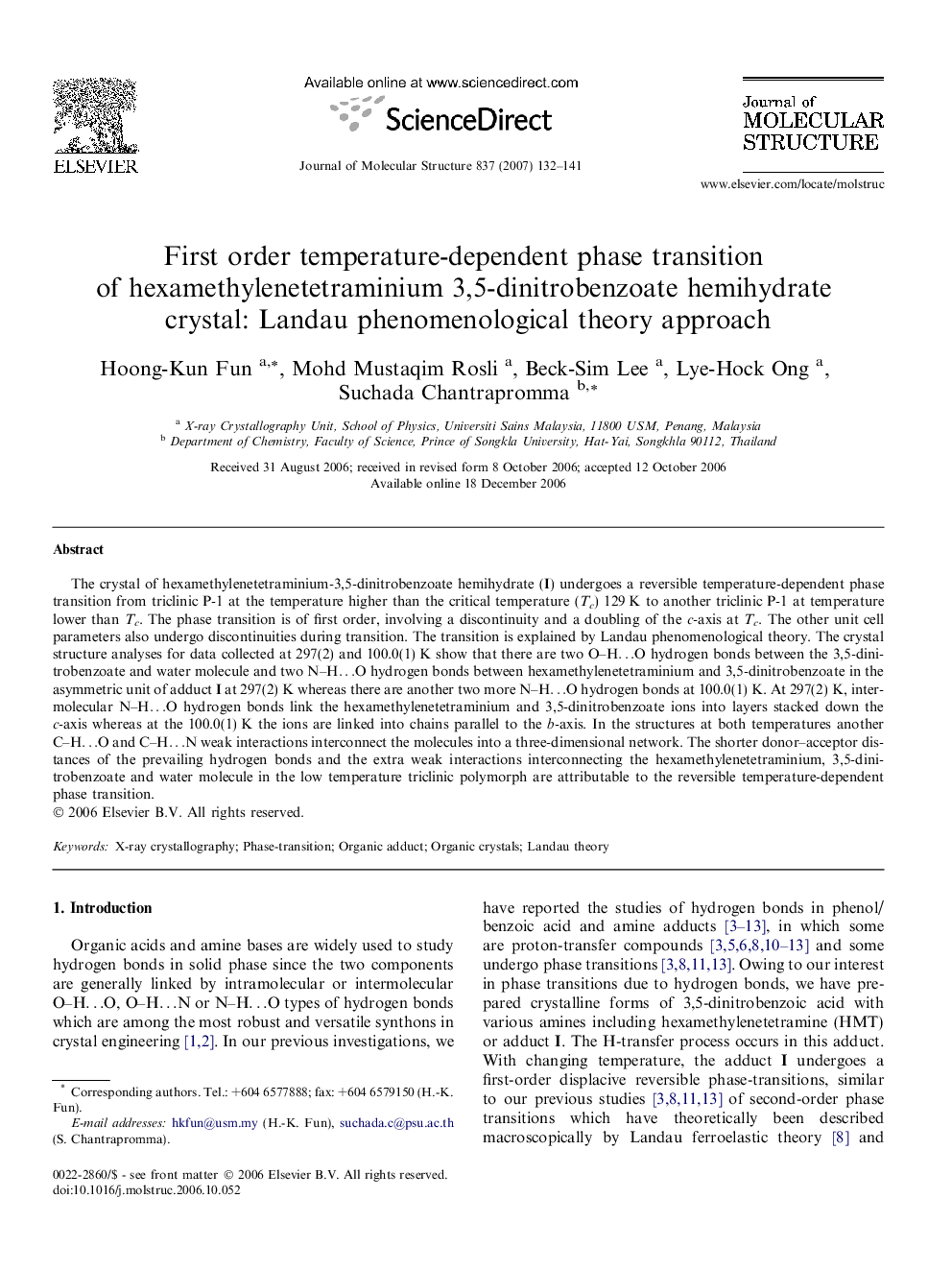| Article ID | Journal | Published Year | Pages | File Type |
|---|---|---|---|---|
| 1407916 | Journal of Molecular Structure | 2007 | 10 Pages |
The crystal of hexamethylenetetraminium-3,5-dinitrobenzoate hemihydrate (I) undergoes a reversible temperature-dependent phase transition from triclinic P-1 at the temperature higher than the critical temperature (Tc) 129 K to another triclinic P-1 at temperature lower than Tc. The phase transition is of first order, involving a discontinuity and a doubling of the c-axis at Tc. The other unit cell parameters also undergo discontinuities during transition. The transition is explained by Landau phenomenological theory. The crystal structure analyses for data collected at 297(2) and 100.0(1) K show that there are two O–H…O hydrogen bonds between the 3,5-dinitrobenzoate and water molecule and two N–H…O hydrogen bonds between hexamethylenetetraminium and 3,5-dinitrobenzoate in the asymmetric unit of adduct I at 297(2) K whereas there are another two more N–H…O hydrogen bonds at 100.0(1) K. At 297(2) K, intermolecular N–H…O hydrogen bonds link the hexamethylenetetraminium and 3,5-dinitrobenzoate ions into layers stacked down the c-axis whereas at the 100.0(1) K the ions are linked into chains parallel to the b-axis. In the structures at both temperatures another C–H…O and C–H…N weak interactions interconnect the molecules into a three-dimensional network. The shorter donor–acceptor distances of the prevailing hydrogen bonds and the extra weak interactions interconnecting the hexamethylenetetraminium, 3,5-dinitrobenzoate and water molecule in the low temperature triclinic polymorph are attributable to the reversible temperature-dependent phase transition.
